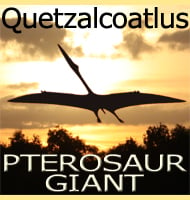In Depth
Known only from incomplete material, Morrinhosuchus is still an interesting notosuchian. The skull of Morrinhosuchus still retained an antorbital fenestra (an opening in front of the eye socket, and a small notch was present between the premaxilla and maxilla, the two tooth bearing bones of the upper jaw. The mandibles (lower jaw bones) arch upwards as towards the front, and the symphysis where they join together also includes the splenials. The overall shape of the mouth when viewed from above is roughly triangular with the jaws narrowing as they come together towards the front, possibly indicating that Morrinhosuchus was very selective about what it picked up with its mouth. The teeth towards the back of the mouth are both bulbous with a circular cross section. This is a very significant discovery since at the time of the description, Morrinhosuchus was only the second notosuchian known to have had these kind of teeth after the 1999 description of Mariliasuchus which is also known from the same formation as Morrinhosuchus. Because of these teeth, Mariliasuchus has been considered to have been similar to a pig in its ecological niche, meaning a possible omnivorous diet, and the same may be true for Morrinhosuchus. However some reptiles such as the crocodile Brachychampsa, the pterosaur Dsungaripterus and the mosasaur Globidens also have rounded teeth for a durophagus (shellfish eating) diets. The Adamantina Formation is known to have at least been partial wetland based upon the remains of other creatures such as turtles there, so it is perhaps not impossible that Morrinhosuchus ate freshwater shellfish, the narrow anterior mouth making picking the shellfish up out of tight spaces easier.
Aside from the aforementioned Morrinhosuchus, other notosuchians that are known from the Adamantina Formation include Adamantinasuchus and Armadillosuchus. The Morrinhosuchus genus was named after the Morrinho de Santa Luzia, a hill near where the type fossils of the genus were found. The type species name, M. luziae, is after the chapel of Santa Luzia which is located on top of the hill.
Further Reading
- Morrinhosuchus luziae, um novo Crocodylomorpha Notosuchia da Bacia Bauru, Brasil - F. V. Iori & I. S. Carvalho - 2009.








